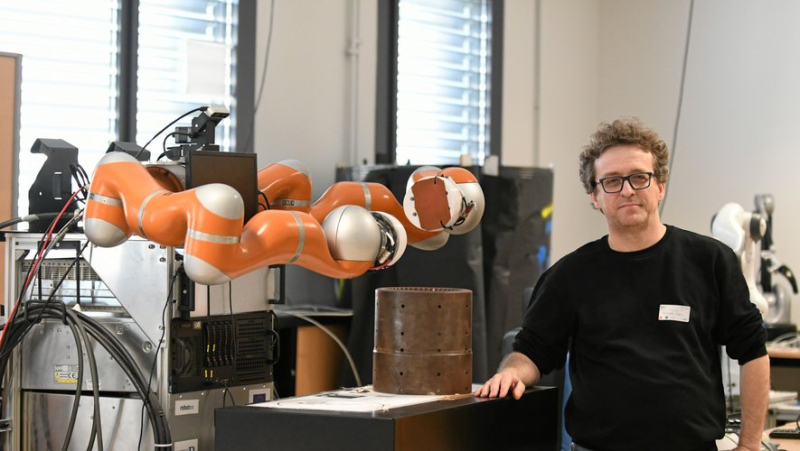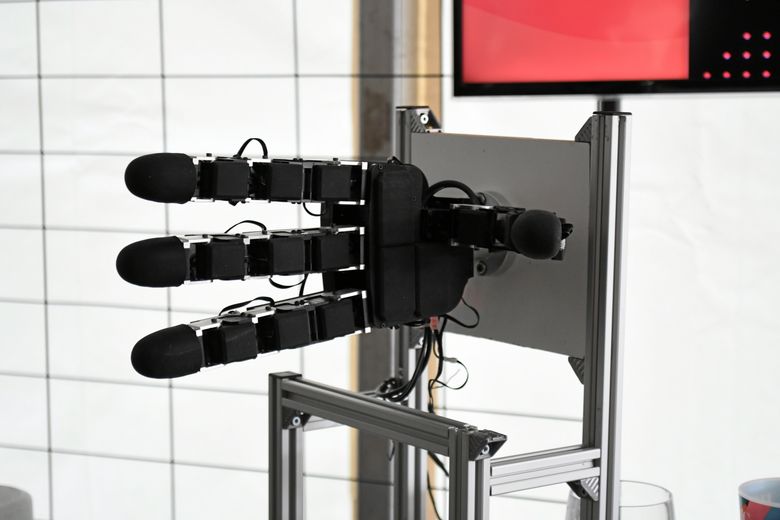“For robotics adapted to humans”, a new national program at the heart of the University of Montpellier

Robin Passama, directeur de recherche à l'Université de Montpellier. Midi Libre – DORIAN CAYUELA
This Monday, March 11, 2024, the University of Montpellier launched the new PEPR Robotics program. A large-scale national program, which brings together the entire scientific community, to develop robots that are more ethical, sustainable and adapted to humans.
"Our country needs robotics that are closer to humans and in tune with our society. It's essential". Jean Frédéric Gerbeau does not hide his ambition. Deputy Director General for Science at Inria, (the National Institute for Research in Digital Sciences and Technologies), his trip to Montpellier promises a new era for French robotics. "We have a strong capacity in industrial robotics but not "human" like in Japan or South Korea for example" he continues. "Human", that is to say taking up our characteristics and thus developing models close to our way of life.
34 million euros over 8 years
To do this, around a hundred people from the scientific community, from Paris to Grenoble via Bordeaux, met at the University's Mechanical and Civil Engineering Laboratory. of Montpellier to launch the new national research program for robotics adapted to humans.
Over 8 years, 34 million euros will be injected into different scientific sectors, from pure science to social science, in order to develop and support project leaders to create robots in fluid and interactive interaction. natural with humans. "Robotics cannot be satisfied with technology. A plurality of knowledge is essential to achieve this ambition. Combining social science and technology is a first for robotics", adds Jean-Frédéric Gerbeau.
Montpellier projects financed
Hidden behind tinted windows, the technological laboratories of the University of Montpellier are teeming with scientists. In the four corners of the main lab: robots of all sizes and shapes, humanoid or not, are in action.
Among them, particular attention is paid to the orange articulated arms which sit in the middle of the room. "It's an interactive mobile manipulator. For the moment, this robot is made of odds and ends, understand that the added elements are not necessarily made for this", explains Robin Passama, engineer and responsible for UM laboratories. This large, pseudo-anthropomorphic robot (the legs are still missing, editor's note) is used to interact with us. "The PEPR budget will clearly help produce new platforms, new prototypes, to allow the robot to be functional and go into agricultural fields". Today there are no drums, no legs and no body. But ultimately, the robot will be able to be autonomous thanks to the long-term work of our student researchers.
Further away, an articulated hand grips a plastic bottle. "This robotic hand is packed with tactile sensors. Like our hands, the pressure is calculated in order to adjust the force necessary to hold the object", explains Elie Chelly, student researcher. "Picking, sorting fruit… This hand can be used to handle fragile things but above all to avoid difficult work in the fields", the student hopes.  ;

This hand can hold an object by calculating the pressure exerted. Free Midi – DORIAN CAYUELA
I subscribe to read more




